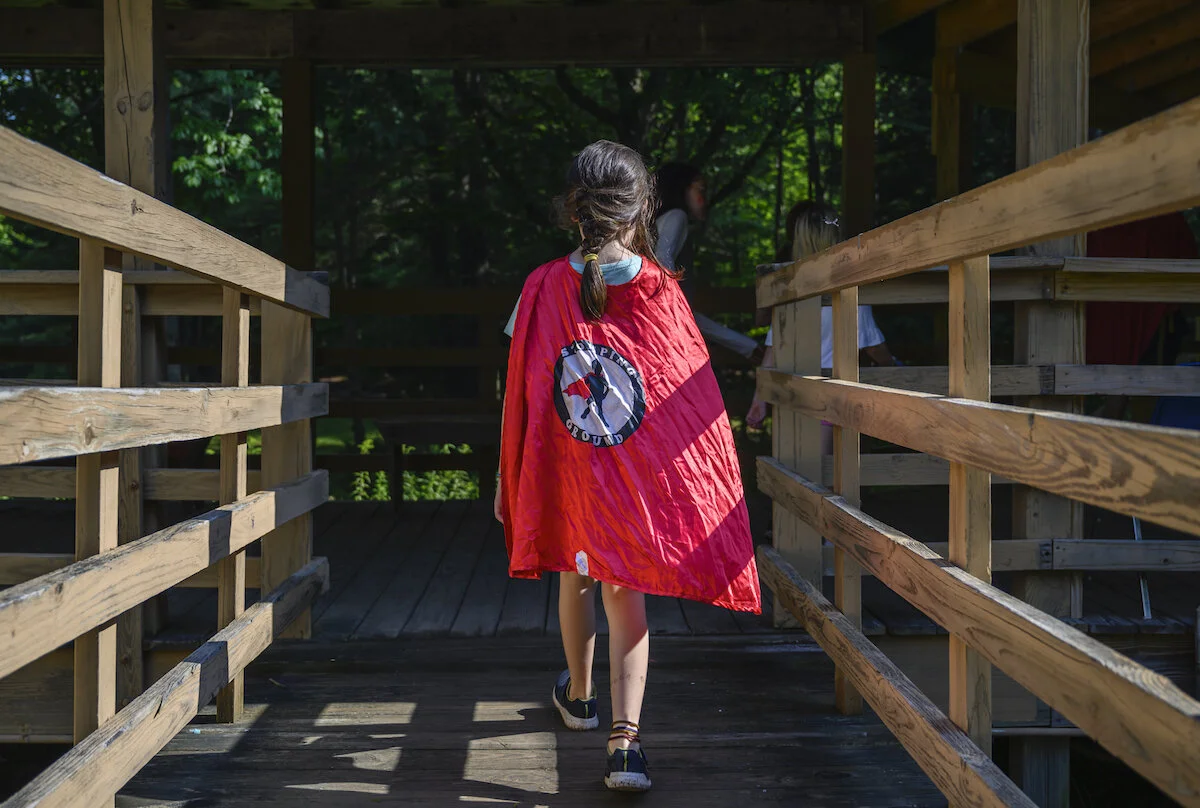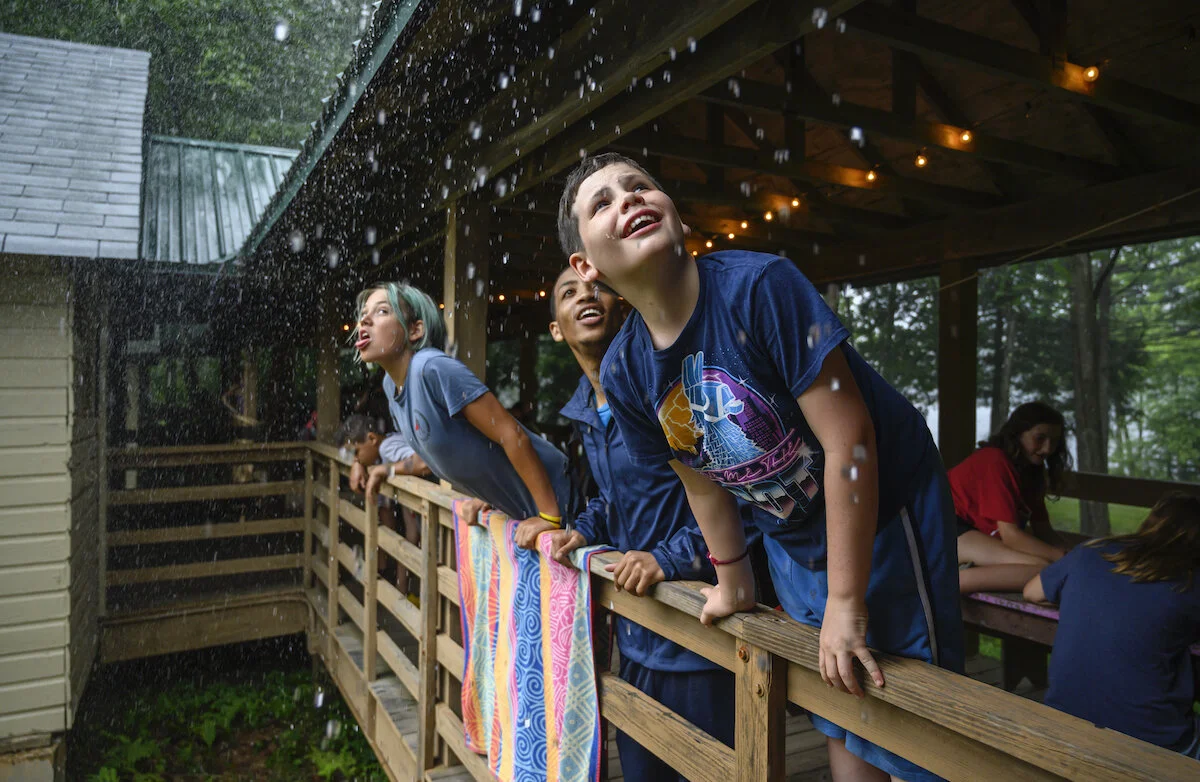Circles at Stomping Ground
Circles are a basic conversation tool that can be applied to any situation. The goal of a circle is to help participants or group members understand each others perspectives or experiences. Different kinds of circles can help build empathy, solve problems, facilitate brainstorming, heal harm, welcome new people, celebrate victories and build community.
Check In Circles
There are three circles built into every day at camp. They take place with your cabin group and staff. These provide a space for stronger connections within the group. They are facilitated by the counselor and can be done anywhere at camp. They start with an opening question and then 2-3 rounds of sharing while using a talking stick.
After Breakfast: Check in Circle
Happens on the way back to the village after breakfast, each cabin group circles up. This might happen while staff and campers are walking, or in a quiet space on the way back to the village. The goal is to check in with how campers are doing, build a connection between cabin members and disseminate information to the group.
After Lunch: Check in Circle
Similar to the after breakfast check-in. There is a little more time after lunch to allow staff and campers to dig deeper on specific cabin issues or cabin culture.
After Evening Program: Embers Circle
Embers circles happen after the evening program and happen as campers are settling in for bed. The goal of an embers circle is to reflect on the day and create community.
The first night of cabin embers is an explanation of circles, why we do them at camp,
Make agreements and let people express their needs in circle
Examples: I like eye contact when I’m talking, I like to be given a second chance to explain something if it seems unclear, I like to fidget with something when I’m talking about something that’s hard, I like to be told directly if I have offended anyone…
Circles become a base for every Embers and follow the outline of:
Opening Question
2-3 Rounds
Closing Questions
Counselors have the freedom to make these as creative and engaging based on their campers and their personal counseling style.
Conflict Circles
A Conflict Circle gets called when there is a conflict that someone, a person directly involved or a concerned friend, thinks warrants a more facilitated conversation. All circles, use the same basic agreements as a foundation for the discussion.
What happens in conflict circles:
One or more people decide they want to have a circle. They either ask the other person/party they’re in conflict with to have a circle or ask a staff member/camper to help them facilitate a circle
The people involved in a conflict come together
The person who called the circle explains why they called the circle, and circle agreements are made
Round 1: Each person shares what happened from their perspective and how they see the conflict
Round 2: Each person shares how they’re feeling as a result of conflict
Round 3: Each person shares a need they have moving forward
Round 4: Agreements are made
Offering an opportunity for each person to say what they need going forward is often the hardest but most important part. Giving participants the opportunity to brainstorm solutions or new boundaries together allows them to own the results and become more invested moving beyond the conflict.
We ask that all campers and staff talk through conflict when it comes up. But we don't force people to work through stuff right away. It can be really painful and ineffective to talk about conflict if you are still fuming or stuck in the need to prove the other person wrong.
It's ok to circle back around, just as long as eventually we come together to sort out what happened in an effort to learn and reestablish trust.
Helpful questions for restorative conversation:
What happened?
What were you thinking about during the time of the incident?
What have you thought about since?
Who has been affected by what happened and how?
What about this has been the hardest for you?
Who does What?
Roles in Circles
Role of Circle Participants:
Follow circle agreements:
One Mic: everyone gets a chance to talk, don’t talk over one another
Vegas Rules: “what happens in the circle, stays in the circle”- Keep things confidential and trust each other
Ask for what you need
Choice: You can’t force someone to be in a circle
Bystander
Speak from your perspective
Don’t hold back; be vulnerable and honest
Say what you mean but don’t say it mean
Think about what you say as if you are talking with close friends
Role of Circle Facilitator:
Outline circle agreements and interrupt members of circles if they’re not following agreements
Start rounds with opening questions
THESE CAN BE ANYTHING. Change them to make sense for kids based on age and cater them to cabin issues when it makes sense!
One feeling word
A good thing that happened to you today
One thing you’d like to “leave at the door” for the remainder of the circle
A favorite memory
If you were an animal what would you be and why
How would your best friends describe you
Describe your perfect day
Who is someone you respect and why
What is it like for you when you think someone is mad at you
Goal for the week
What is helpful for you when you’re upset
What will you remember most from your week at camp



